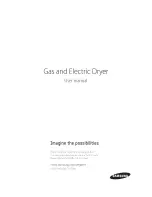
Pag. 14
ADJUSTING PRIMARY AIRSUPPLY TO MAIN BURNER (Fig. 7)
- Unscrew the bolt (Ref. D) that fixes the bush that adjusts the primary air supply (Ref. C).
- Position the bush (Ref. C) at distance “X” according to the type of gas installed (see ‘primary air ’ on the spe-
cifications table).
- Tighten the fixing bolt again (Ref. D).
- Seal the adjusted part with tape to prevent tampering.
N.B.: the primary air supply has been correctly adjusted when it can be guaranteed that the flame will not detach
itself when the burner is cold and if there is no blow-back when the burner is hot.
Once the gas conversion operations have been completed, check the dismantled parts for leaks using soapy
water or foam products. DO NOT SEARCH FOR LEAKS WITH NAKED LIGHTS.
A
B
C
D
Fig. 5
1
2
3
4
Fig. 7
REPLACING THE PILOT BURNER NOZZLE (Fig. 8)
- Unscrew screwed-on cap (Ref. 2), remove the
nozzle (Ref. 3) and replace it with one that is
suitable for the type of selected gas.
- Refit the screwed-on cap.
- Use a foam product to check that the cap
does not leak.
After converting or adapting for the gas, the
plate specifying the type of nozzles used MUST
be affixed above the rating plate.
Fig. 8
1.6 CONNECTING TO THE POWER SUPPLY
- Before connecting to the power supply, make sure that the power supply is compatible voltage and frequency
values displayed on the rating plate.
- The supplied appliance is designed to perform the operation specified on the rating plate located inside the
door.
- To connect the power supply, identify the junction box inside the appliance and connect the power cable with a
standardised plug that is adequate to the power intake. Follow the instructions on the terminal clamp. Plug the
plug into a power socket that has been properly earthed in compliance with current legislation.
- Before connecting the appliance directly to the main power supply, fit a circuit breaker of adequate capacity
whose contacts have a minim distance of 3 mm.
- When the machine is operating the power supply must not deviate from the nominal supply by more than ±
10%.
- The equipment must also be part of an equipotential system whose efficiency must be tested to ensure com-
pliance with current regulations.
Before delivering the appliance to the user:
- check that it operates correctly,
- instruct the user on how to use it.















































